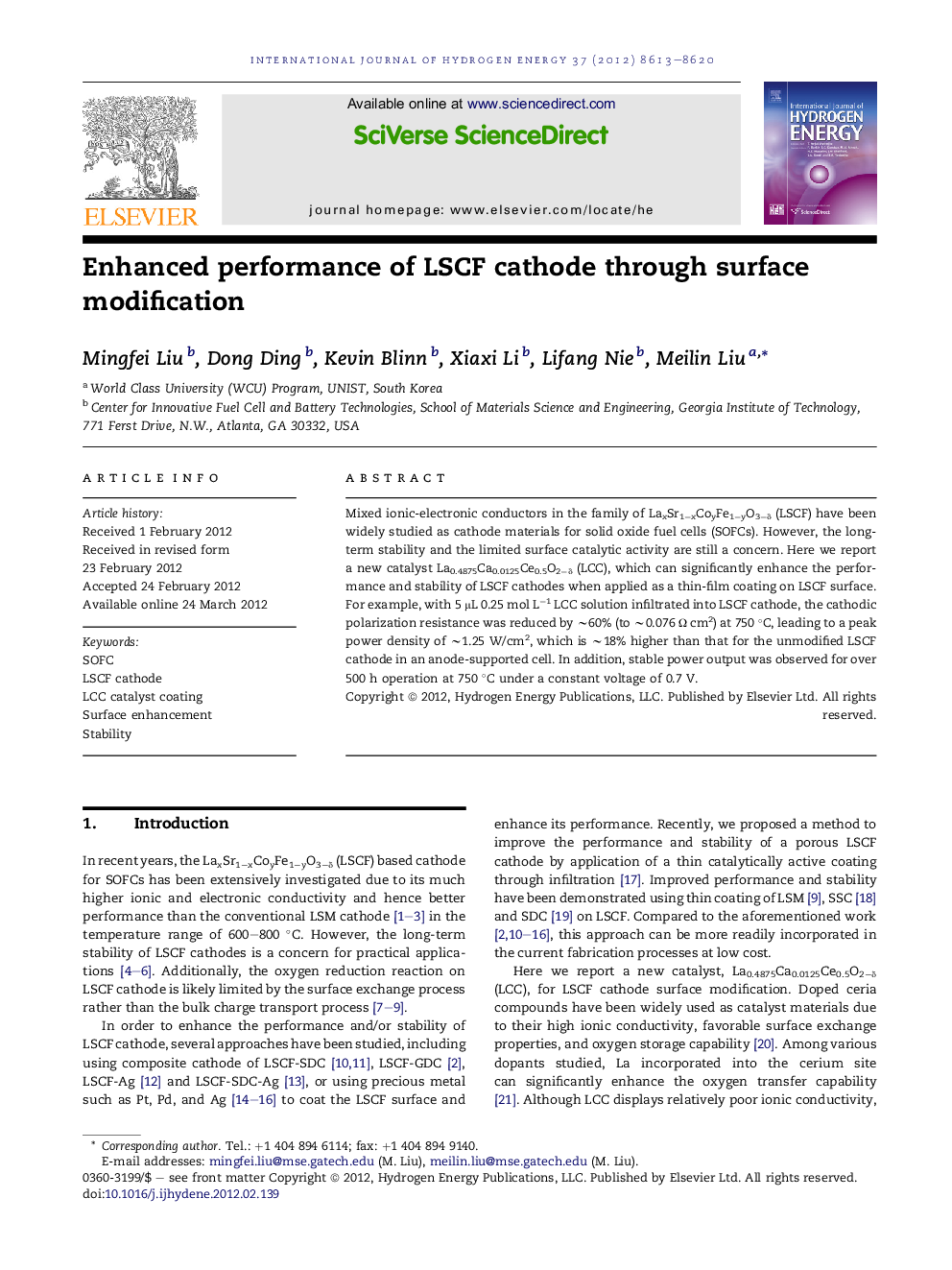| Article ID | Journal | Published Year | Pages | File Type |
|---|---|---|---|---|
| 1275361 | International Journal of Hydrogen Energy | 2012 | 8 Pages |
Mixed ionic-electronic conductors in the family of LaxSr1−xCoyFe1−yO3−δ (LSCF) have been widely studied as cathode materials for solid oxide fuel cells (SOFCs). However, the long-term stability and the limited surface catalytic activity are still a concern. Here we report a new catalyst La0.4875Ca0.0125Ce0.5O2−δ (LCC), which can significantly enhance the performance and stability of LSCF cathodes when applied as a thin-film coating on LSCF surface. For example, with 5 μL 0.25 mol L−1 LCC solution infiltrated into LSCF cathode, the cathodic polarization resistance was reduced by ∼60% (to ∼0.076 Ω cm2) at 750 °C, leading to a peak power density of ∼1.25 W/cm2, which is ∼18% higher than that for the unmodified LSCF cathode in an anode-supported cell. In addition, stable power output was observed for over 500 h operation at 750 °C under a constant voltage of 0.7 V.
► The cathodic polarization of LSCF was reduced by ∼60% at 750 °C by an infiltrated LCC solution. ► A single cell with the LCC-modified LSCF cathode demonstrated an 18% improvement in peak power density at 750 °C. ► Stable power output at 0.7 V and 750 °C was observed for the LCC-modified cathode for at least 550 h. ► This new LCC modification approach is simple and can be readily incorporated into commercially available SOFCs at low cost.
